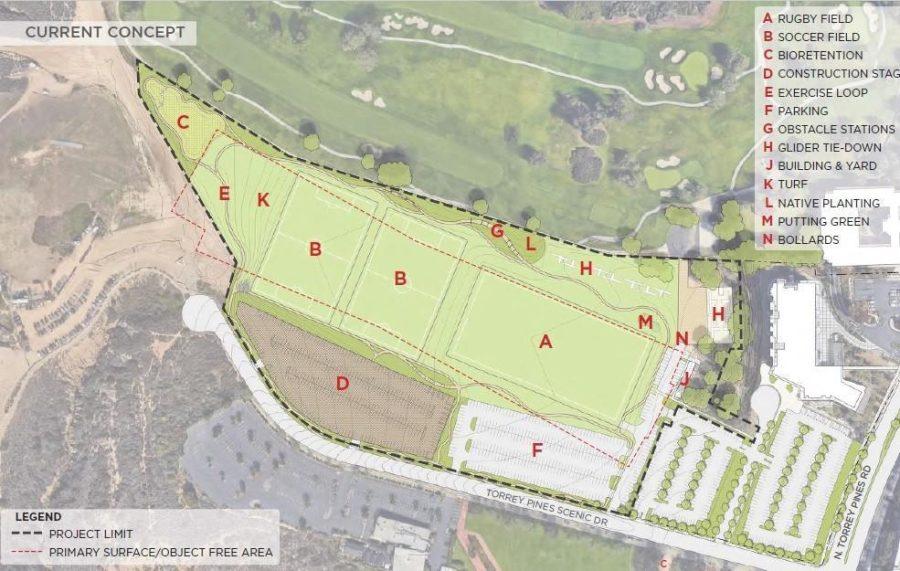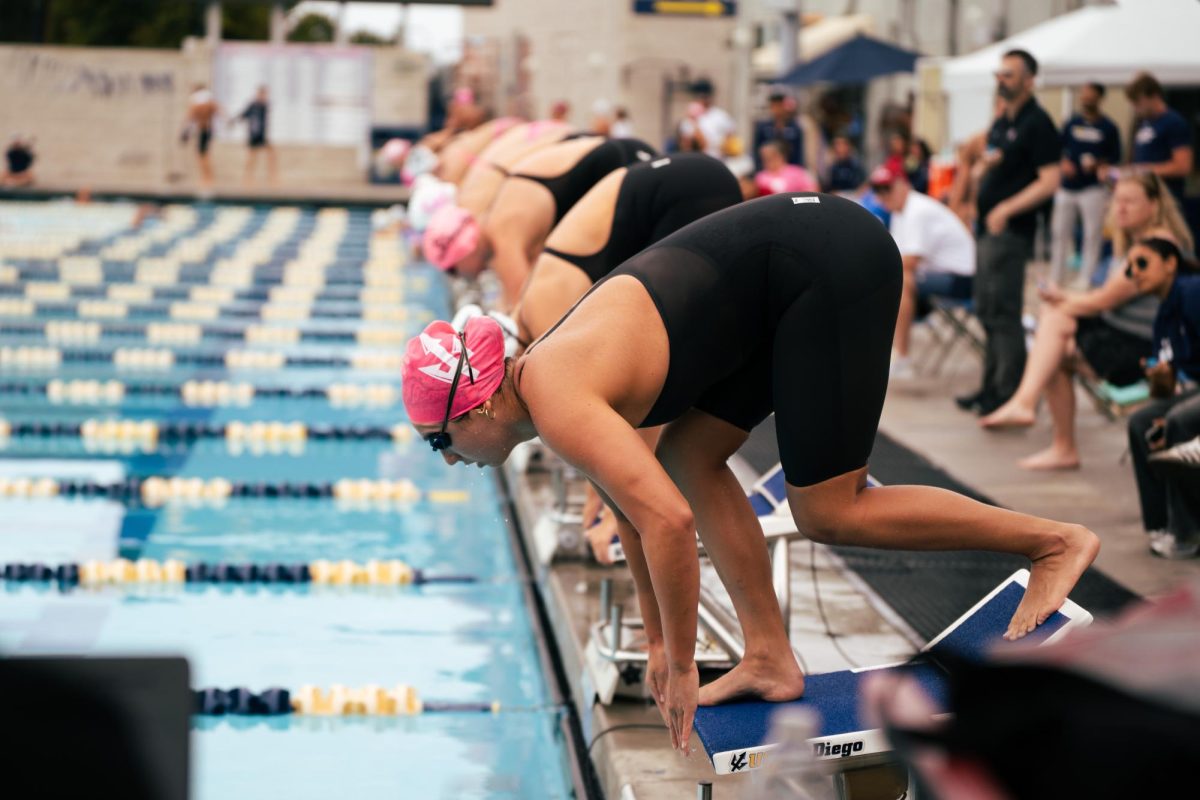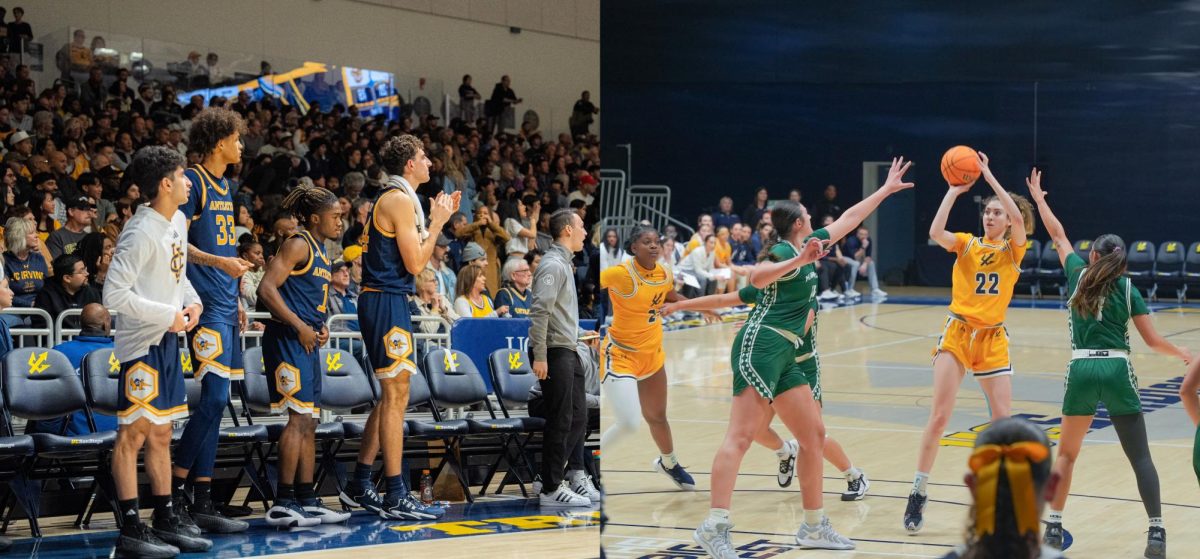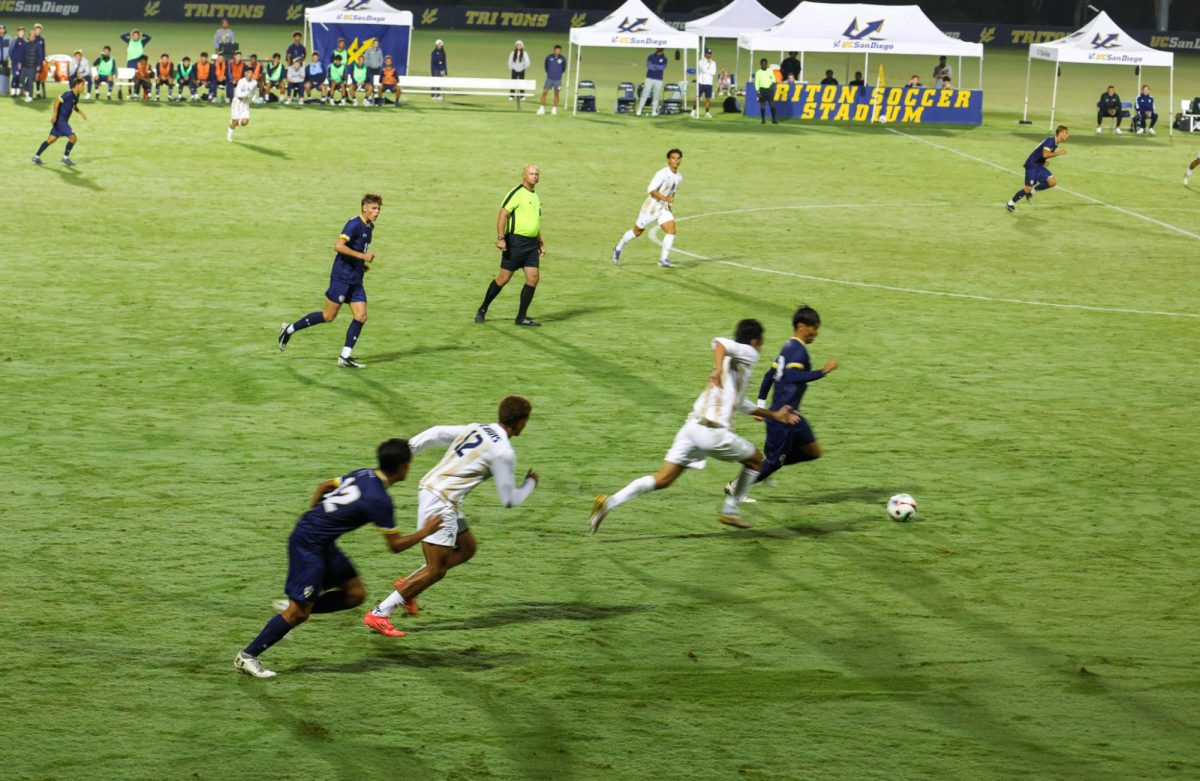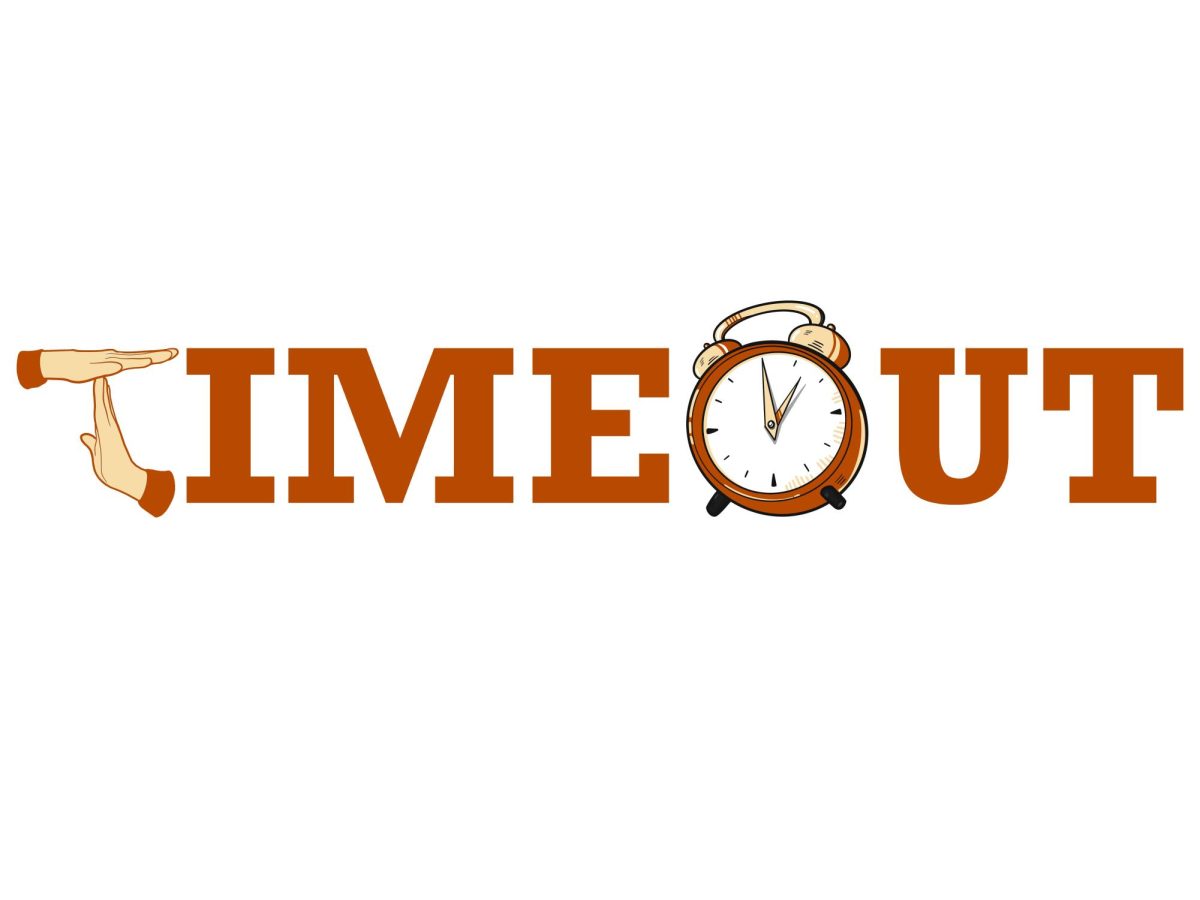In July 2018, UC San Diego introduced the newest update of its Long Range Development Plan, which includes land use mapping throughout campus. A notable part of the plan is the designation of a portion of the Torrey Pines Gliderport for “Recreation”. Although no plans currently exist to move forward with a project at Gliderport, UCSD staff did conduct a feasibility study to determine how recreational improvements could be designed to address the needs of a growing student body. The feasibility study looked at providing additional student amenities while preserving the Gliderport as a historic landmark and community space for public utility.
The amenities being considered include the construction of an exercise loop with a decomposed granite path and obstacle courses, a rugby field, two soccer fields, a staging area for construction and field operations, a water detention basin to account for runoff, and at least 300 parking spaces. Additionally, there is also the possibility of raising a building intended for staff offices and a restroom.
In an article published in La Jolla Light, Todd Pitman — UCSD Assistant Director in charge of Physical and Community Planning — noted the significance of adequate distribution towards the various uses of the land, saying, “The most important thing, from my point of view, is we are really truly trying to do the right thing with this land. We see our solution as a win-win for the site. Recreation is a big deal, and history is important, so our proposal overlaps with open-space planning and university planning.”
The UCSD Guardian spoke with Executive Director of University Communications Laura Margoni who then provided a coordinated explanation on behalf of the evolution of the recreational center at the Gliderport as a part of the LRDP as a whole, and the role of contending parties in the developmental process.
The university also values the input of local organizations involved in protecting rightful use of the land such as Save Our Heritage Organisation and the Associated Glider Clubs of Southern California, engaging stakeholders in the elaboration of the project, and acknowledging the needs of the campus and community.
The Torrey Pines Gliderport is located in the California Coastal Zone. It is recognized in the State, National and San Diego Register of historic landmarks as early as 1992, and the recreational center would require review and approval by the California Coastal Commission.
The LRDP, along with the accompanying Environmental Impact Report, is expected to be approved in November by the Regents. If it is indeed approved, the LRDP will guide campus development through 2035. Any individual projects will still need to have funding identified and obtain appropriate approvals before they can be actualized.
When asked how a potential project mentioned in the LRDP could move forward, Margoni and the collaborating UC representatives gave the following explanation:
“The Regents do approve an entire LRDP (…). However, the LRDP does not itself ‘approve’ individual projects. Once funding is identified for a project, each project goes through its own individual review by the campus, and UC Regents when required.”
Currently, most of the gliderport area in question is being used as staging for construction equipment for the North Torrey Pines Living and Learning Neighborhood. If the recreational center project were to move forward, it would not be able to do so until the Living and Learning Neighborhood project is completed in 2020.
According to University Communications, the LRDP’s public review period is over. Students who wish to voice feedback on future projects should remain alert for any upcoming forums and surveys that will be conducted to provide information on individual projects as plans for funding release in the future. These will most likely come about after funding for a project is identified and campus approval is obtained.
photo from La Jolla Light
This article has been corrected to clarify that the plan is merely being considered and has not yet been formally proposed or funded. The title has been changed. A quote from a commuter student has also been removed from the original article.


